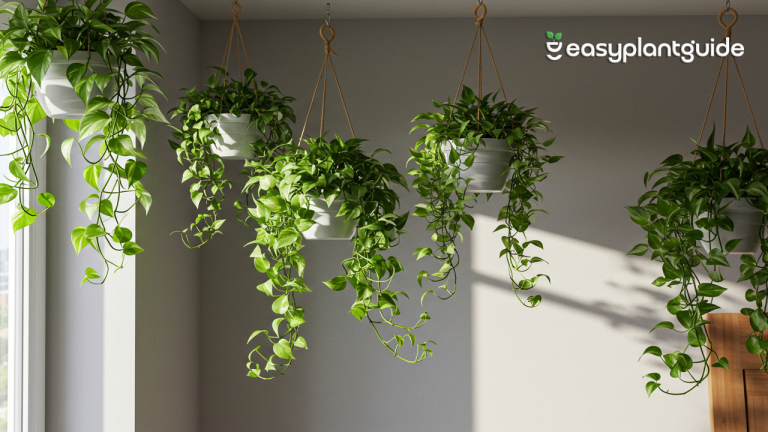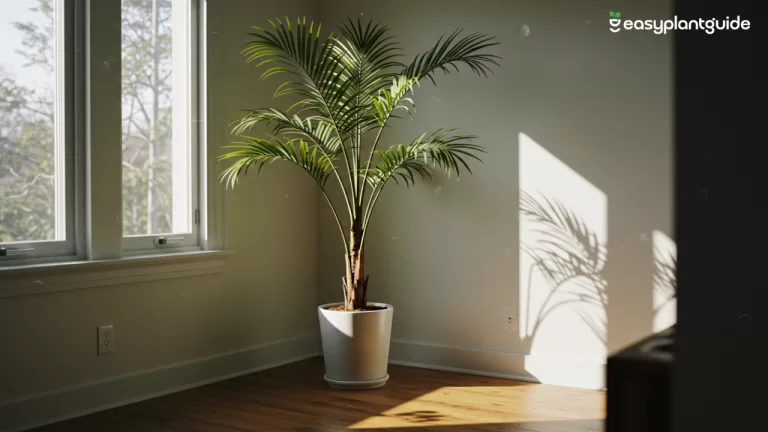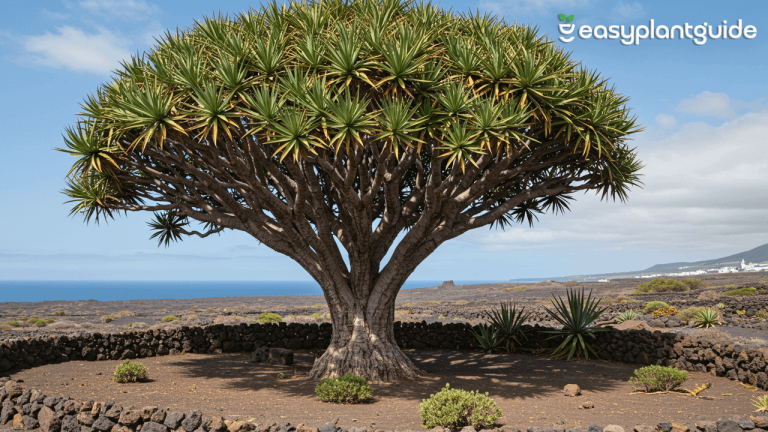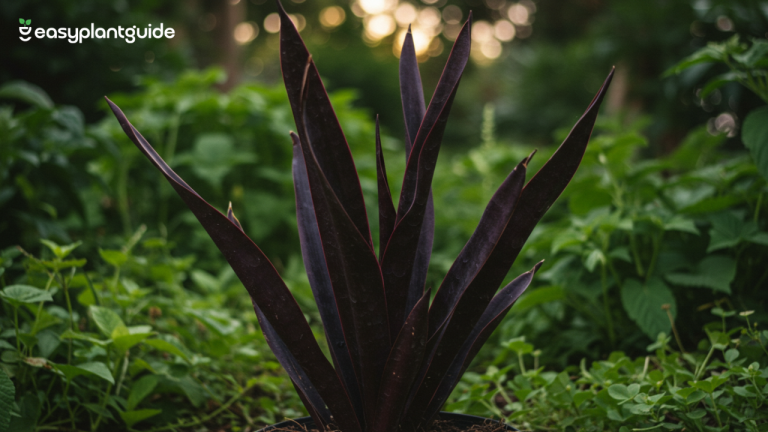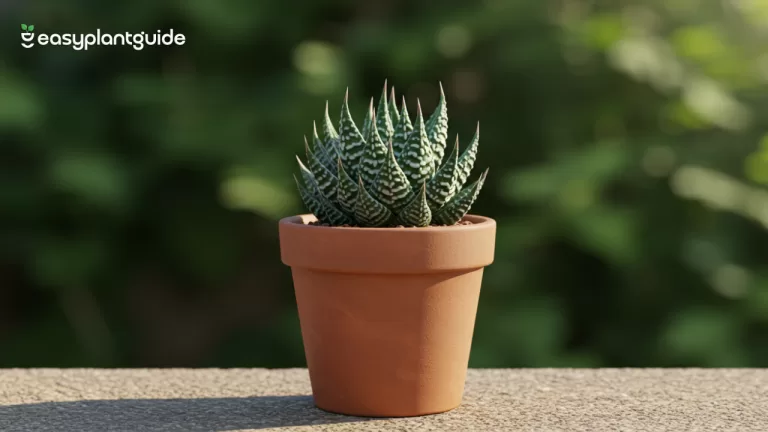Chinese Money Plant Guide 2025: Care, Symbolism & Benefits
The Chinese Money Plant (Pilea peperomioides) continues to shine as one of the most stylish and meaningful houseplants in 2025. With its playful coin-shaped leaves, low-maintenance nature, and reputation as a bringer of prosperity, this plant has earned a special place in modern homes worldwide. Its unique round leaves resemble green coins, symbolizing wealth and good fortune in many cultures. Beyond its symbolism, it has become a design favorite, often featured in minimalist, Scandinavian, and modern interiors, proving that nature and style can coexist beautifully.
In this 2025 guide, we’ll explore its history, care tips, benefits, and cultural significance, showing you why the Chinese Money Plant remains a timeless choice that blends beauty, positivity, and simplicity in every home.

What Exactly Is the Chinese Money Plant?
At first glance, the Chinese Money Plant looks like a living sculpture. Its round, glossy leaves stand out against slender stems, giving it a balanced and minimalist aesthetic. Scientifically named Pilea peperomioides, it belongs to the nettle family but has no sting.
Native to China’s Yunnan province, its nickname “Money Plant” comes from the resemblance of its leaves to green coins—a universal symbol of luck and prosperity. In 2025, it’s not just a plant—it’s a modern design icon, often featured in homes, cafes, and workspaces around the world.
History and Origin
The plant’s journey is as fascinating as its look. In the 1940s, Norwegian missionary Agnar Espegren brought it from China to Europe. Instead of being mass-produced, it spread through cuttings exchanged between friends, which is why it also earned the name “Friendship Plant.”
For decades, it remained a hidden treasure, until social media platforms like Instagram rediscovered it, propelling it into the spotlight. Today, owning one feels like being part of a global story of generosity and connection.
Why Is It Called the Money Plant?
The name comes from its coin-like leaves, which many cultures link with wealth and prosperity. In Feng Shui, plants with rounded leaves are believed to bring positive energy, harmony, and financial stability. Placing it in your home’s wealth corner (southeast area) is thought to attract abundance.While plants like Jade and Lucky Bamboo share similar symbolism, the Chinese Money Plant stands out with its minimalist, trendy appeal, making it a 2025 favorite among younger generations.
Care Guide for 2025
1. Light Requirements
The Chinese Money Plant thrives in bright, indirect sunlight, which mimics the dappled light of its natural habitat. Direct sun can scorch the delicate coin-shaped leaves, while too little light causes the plant to grow leggy and weak. For best results, place it near a north- or east-facing window where the light is softer. Rotating the pot every week helps ensure even growth, preventing the plant from leaning toward the light.
2. Watering Tips
Watering the Chinese Money Plant is simple but requires attention to timing. Instead of sticking to a rigid schedule, use the “finger test”—check the top inch of soil, and if it feels dry, water thoroughly until liquid drains from the bottom. Avoid leaving the roots sitting in water, as this leads to rot. During winter, the plant naturally slows its growth, so reduce watering to match its lower needs, keeping the soil lightly moist.
3. Temperature & Humidity
This plant enjoys the same comfortable temperatures that humans do, thriving best between 18–24°C (65–75°F). Sudden changes in temperature, such as drafts from doors, air conditioners, or heaters, can stress the plant and cause leaf damage. Humidity is not a major concern for the Chinese Money Plant, but it does appreciate a gentle misting now and then, especially in drier environments. Providing stable conditions helps the plant remain vibrant and healthy year-round.
4. Soil & Potting
To keep your Chinese Money Plant growing strong, use a well-draining soil mix enriched with perlite or sand, which prevents waterlogging and encourages root health. Over time, the soil can lose nutrients and compact, so repotting every one to two years is recommended. Choose a pot with drainage holes to avoid excess moisture, and gently loosen the roots during repotting. This refreshes the plant’s environment, giving it space and energy for continued lush growth.
Symbolism and Beliefs
The Chinese Money Plant isn’t just admired for its looks—it carries deep symbolism and meaning. Its round, coin-like leaves are widely associated with wealth and prosperity, making it a natural emblem of abundance. Beyond financial luck, the plant is also a symbol of friendship and generosity. Its pups, or baby plants, are easy to propagate and gift, turning it into a living reminder of sharing and connection between people.
In Feng Shui, the Chinese Money Plant is believed to attract good energy, harmony, and balance to any space. Some traditions even suggest placing a real coin in the pot to enhance its wealth-attracting powers. By 2025, it has become more than just a trendy houseplant—it is seen as a thoughtful and modern gesture of goodwill. Gifting it is like handing someone a “green fortune,” blending beauty with cultural significance.
Benefits of the Chinese Money Plant
1. Decorative Charm
The Chinese Money Plant, with its signature round, coin-shaped leaves, has become a favorite in modern home décor. Its minimalist look complements Scandinavian, bohemian, and contemporary interiors, bringing a fresh touch of greenery without overwhelming the space. Whether placed on a shelf, coffee table, or office desk, this plant acts as a natural statement piece that instantly brightens any room. Its symmetrical leaves also create a sense of balance, making it visually soothing.
2. Low Maintenance
One of the biggest reasons for the Chinese Money Plant’s popularity is its easy care routine. Unlike many houseplants that demand constant attention, this one thrives with little effort. It only needs moderate watering, indirect sunlight, and occasional feeding to stay lush and healthy. Beginners, students, and busy professionals love it because it doesn’t punish neglect quickly. Even if you miss a watering, the plant usually bounces back, making it a stress-free addition to any plant collection.
3. Air-Purifying Qualities
Beyond its beauty, the Chinese Money Plant works as a natural air filter. Like many green plants, it absorbs toxins such as formaldehyde and carbon dioxide while releasing clean oxygen into the room. This creates a healthier indoor atmosphere, especially in closed environments like offices or apartments. With cleaner air, you’re less likely to feel fatigued, and your overall well-being improves. It’s a simple yet effective way to make your home healthier while enjoying nature indoors.
4. Mood Booster
Bringing greenery indoors has been scientifically linked to reduced stress and increased productivity. The Chinese Money Plant’s vibrant green leaves have a calming effect that can lift your spirits after a tiring day. Its presence in a workspace helps improve focus, making it a natural productivity booster. In living rooms or bedrooms, it creates a peaceful vibe, perfect for relaxation. The soothing look of the plant also encourages mindfulness and adds to emotional well-being.
5. Easy Propagation
One of the most exciting aspects of the Chinese Money Plant is how easily it propagates. The plant naturally produces small offshoots, known as “pups,” at its base. These can be gently removed and replanted in their own pots, giving rise to new plants. Not only is this a budget-friendly way to grow your collection, but it’s also a thoughtful gift idea. Sharing a baby plant with friends or family carries symbolic meaning, as you’re passing on prosperity and good fortune.
6. Positivity & Feng Shui Energy
The Chinese Money Plant is deeply rooted in symbolism, especially in Feng Shui practices. Its coin-like leaves are thought to attract wealth, luck, and prosperity to the household. Placing it near the entrance, on a work desk, or in the southeast corner of your home is believed to enhance financial energy and positivity. Even if you don’t follow Feng Shui, the plant’s fresh green aura naturally fills the room with good vibes, making it a symbol of growth and harmony.
Common Problems and Quick Fixes
- Yellow leaves usually mean overwatering, so let the soil dry before watering again.
- Drooping leaves signal the plant needs water or more light.
- Curling or brown spots happen from too much sun or inconsistent watering.
- Leggy growth shows the plant needs a brighter spot.
- Each symptom is simply your plant’s way of asking for a small adjustment.
Chinese Money Plant vs. Other Lucky Plants
| Feature | Chinese Money Plant | Jade Plant | Lucky Bamboo |
|---|---|---|---|
| Leaf Shape | Round, coin-like | Thick, oval | Long, tubular |
| Symbolism | Wealth, luck | Prosperity | Good fortune |
| Care Level | Easy | Moderate | Very easy |
| Growth Speed | Moderate | Slow | Fast |
| Best Placement | Indirect sunlight | Bright sun | Low light |
Decor Inspiration for 2025

- Place a tall one in a living room corner for a bold statement.
- Keep a small one on your work desk for focus and freshness.
- Pair with terracotta pots for rustic charm.
- Use sleek ceramic planters for a Scandinavian vibe.
- Mix with succulents and ferns on a shelf for variety.
Conclusion
The Chinese Money Plant Guide 2025 shows why this plant remains a global favorite: it’s beautiful, symbolic, and rewarding in every way. From its history of friendship to its coin-like leaves that symbolize prosperity, it carries a blend of charm and meaning no other plant can match.
Easy to care for, uplifting in presence, and endlessly giftable, the Chinese Money Plant is more than decoration—it’s a piece of living positivity. Whether you believe in Feng Shui or simply love stylish greenery, adding this plant to your space in 2025 is a choice that brings luck, joy, and beauty together.
You can also check Amazing Shade Houseplants to explore more greenery that thrives indoors with style and ease.


